Windsong on the Reef
1 Stubbs Road, Providenciales, Turks & Caicos Islands TKCA 1ZZ
Coordinates in degrees decimal: 21.785278 N, -72.203333 E.
Visited in January 2025. Photographers: Nigel, Stephen and Reeva Thomas. Cameras: Olympus Tough T6, Nikon Coolpix W300, Apple 16.
Website: https://www.windsongresort.com/
Introduction
The Windsong on the Reef resort is located in the Bight Settlement on the north coast of Providenciales island. Providenciales one of the westernmost islands in Turks and Caicos group, which consists of 40 low lying coral islands. The group of islands are located to the south east of the Bahamas and to the east of Cuba, the later of which forms part of the Greater Antilles. It is a British Overseas Territory but is most popular with American tourists.
The resort, which is made up of several 3-4 storey buildings, with both a restaurant and swimming pools, is located on the beach and snorkelling is possible along the whole of the seafront. However, the much-advertised Coral Gardens Reef falls within a protected area and it is only possible to snorkel around the peripheral areas. See the habitat description for another area that exists which is within easy walking distance of the resort.
Providenciales Island is accessible via its international airport, which is located about 9km from the resort. International flights arrive directly from numerous airports in both the USA and Canada. There are also direct flights from the UK and a range of Caribbean islands.
Factors affecting snorkelling
The air temperature in the area is stable with the yearly average between 24C and 29C. Highs are around 32C with lows of 23C. Rainfall is generally very low, with less than 10cm per month, spread over a period of 4-6 days. Highest rainfall is in the period of August to November, with rare downpours occurring during hurricanes. Historically hurricanes have hit Turks and Caicos during the period late August to early September.
Seawater temperatures are relatively uniform throughout the year with a monthly average ranging from 26C in the winter and spring, to an average of 29C in August and September.
Prevailing winds are from the east with winds up to 22 knots occurring about 50% of the time during the year.
The specific weather, water and other conditions that might affect snorkelling are described below:
- When winds are from the north or north-east they can create a surface chop that makes snorkelling uncomfortable. These generally occur during the period November to February and can reduce visibility due to disturbance of sediments.
- The tidal range around the island is quite low with maximum range in the order of 1m but can be as low as 20cm. Despite the low tidal range, along shore currents may be sufficiently strong to push you away from or onto the reef areas. Best times to snorkel are, therefore, at high water or low water.
- By far the greatest risk to snorkelling is small vessel activity. Small vessels often cross, at speed, the areas where snorkelling takes place. This appears to be unregulated and presents a real danger. If you have a surface maker buoy then it is best to use it at all times. Many boats also beach their vessels in the vicinity of the resort, disturbing the sands, which raise fine sediment levels in the water column, reducing visibility, and ultimately causing deposition on the reef areas damaging the corals.
Ecology
The habitats that can be observed while snorkelling at the resort include: degraded coral reef areas which include patches of silt tolerant live corals, shallow water silt covered rocks, coral debris, clean sands both inshore and offshore and extensive seagrass beds with isolated coral and sponge covered outcrops. The coral in general is in a poor state of health, although fish species, including some larger species, such as Nurse Sharks were present in good numbers.
A total number of 96 species were identified during our 10 day trip, comprising 41 fish species including numerous open water species, such as the Atlantic Spadefish . 17 hard and soft coral species were noted in addition to numerous and abundant sponges (10 species) as well as a diverse range of marine algae (18 species). Other species groups were evident but with limited diversity and abundance.
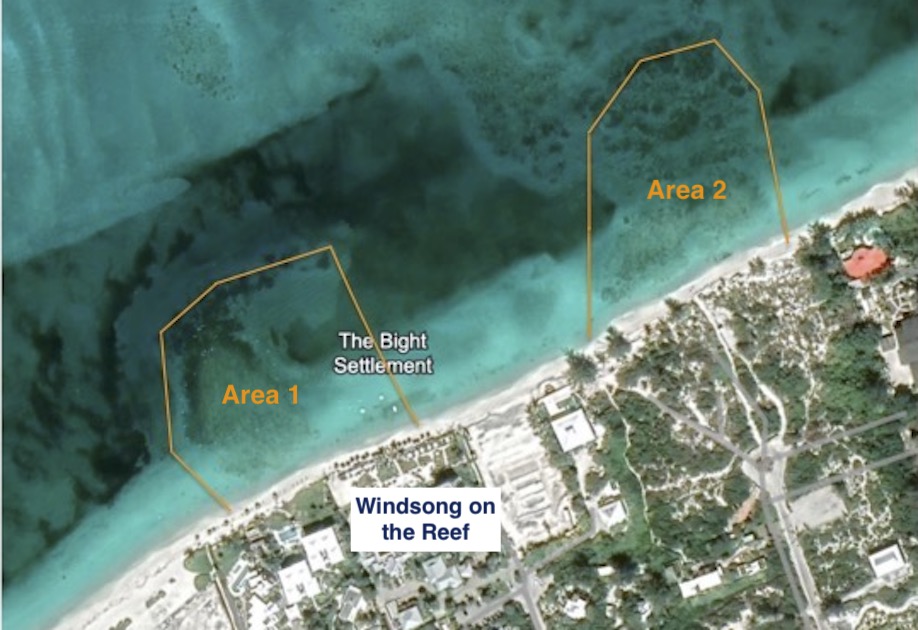
Two areas off the beach can be accessed which have interesting habitats. Area 1 is adjacent the Windsong resort. This area has a large exclusion zone within it, which is, however, seriously distressed due to considerable fine sediment deposition. The other area of interest, Area 2, is in much better condition. It is worth noting that both areas, further offshore, present risks to snorkellers due to poorly managed small vessel activity.
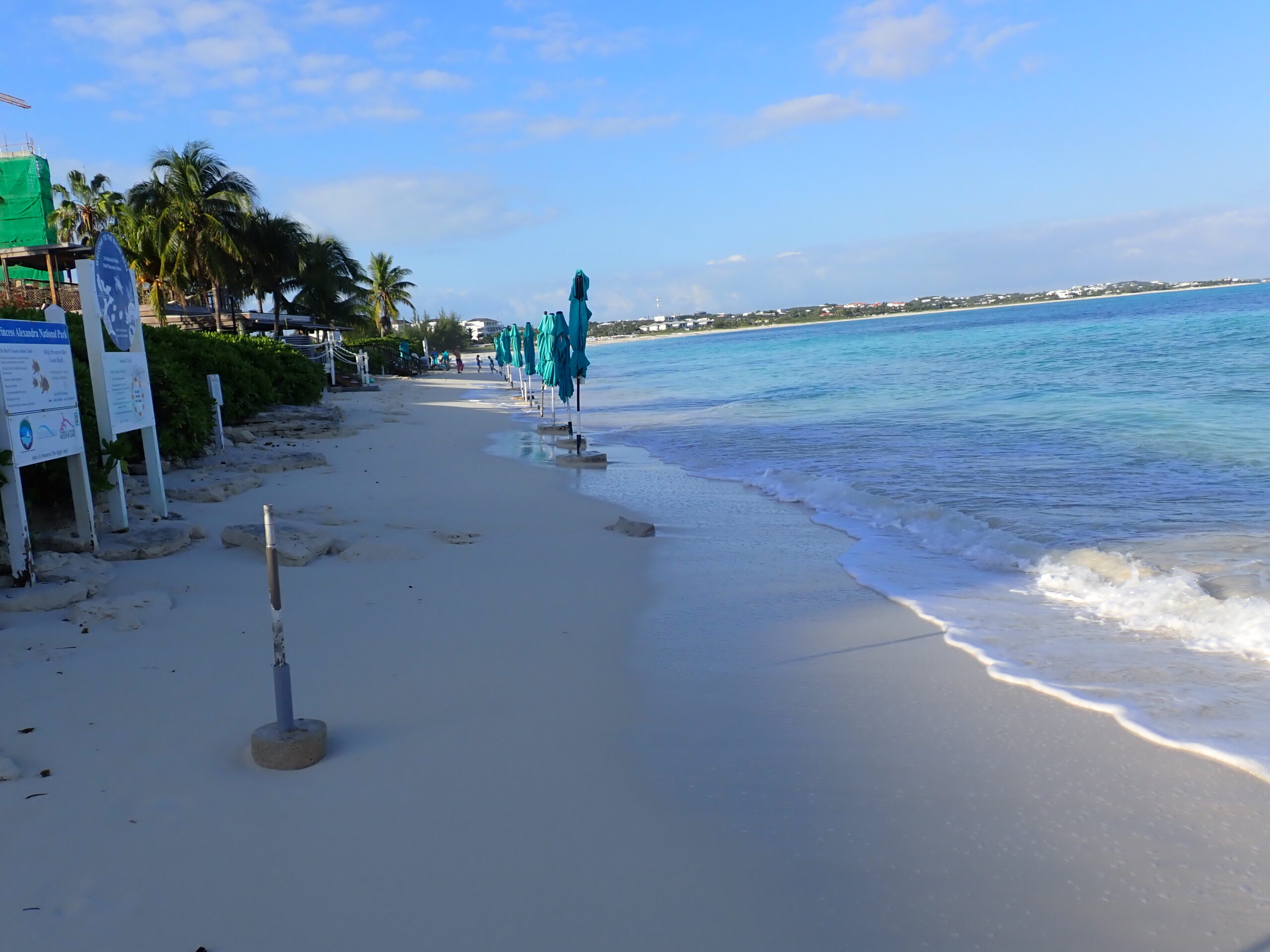
Entry into Area 1 can be made either side of the exclusion zone, with the information panels located centrally. Be aware that currents, that run parallel to shore, may drag you onto or away from the exclusion zone. It is the area around the exclusion zone, in particular in the offshore areas, that are of most interest.
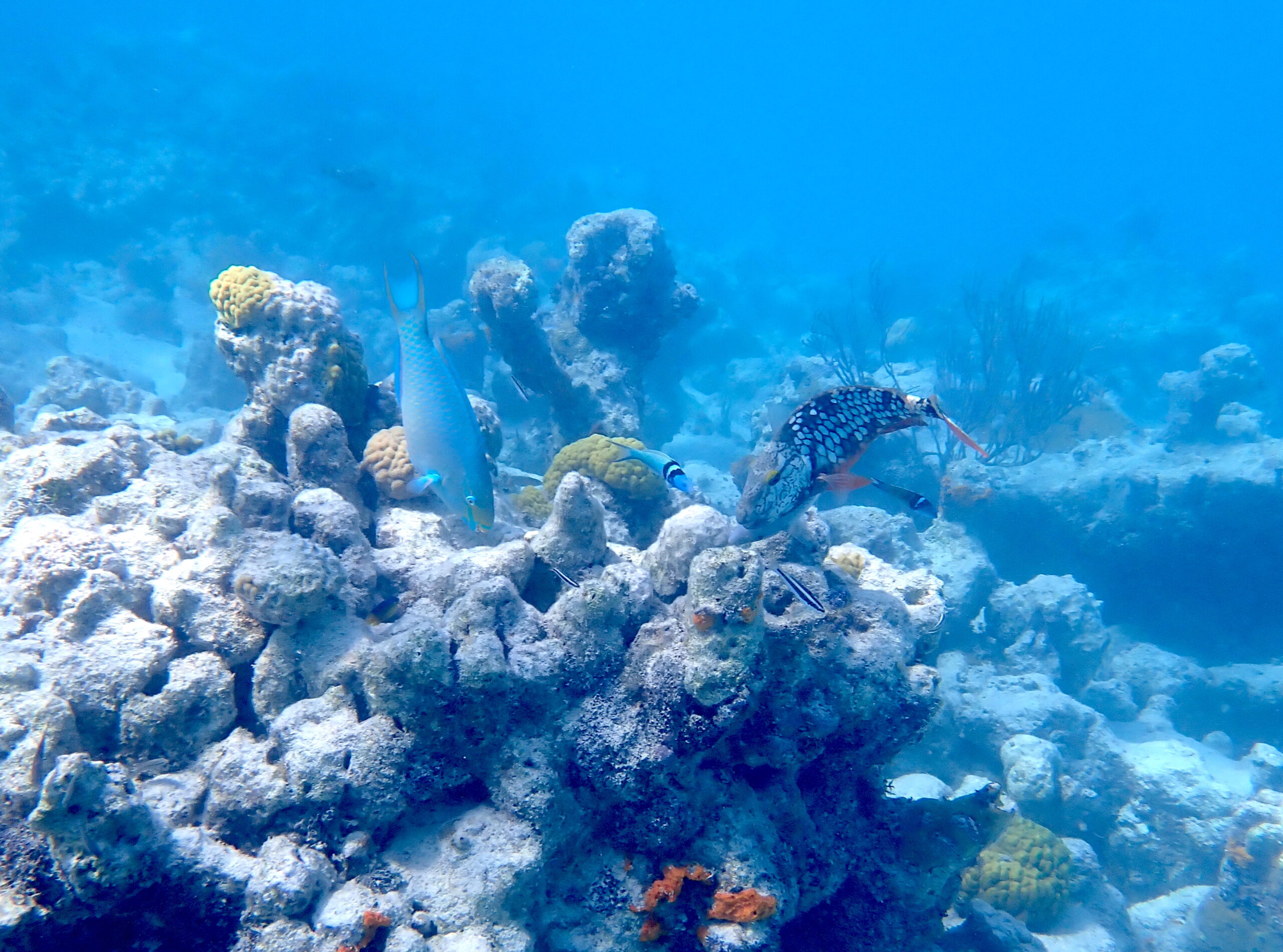
Despite the degraded nature of the coral in the reef area, the offshore extents, to the north east, support a diverse mixture of fish species.
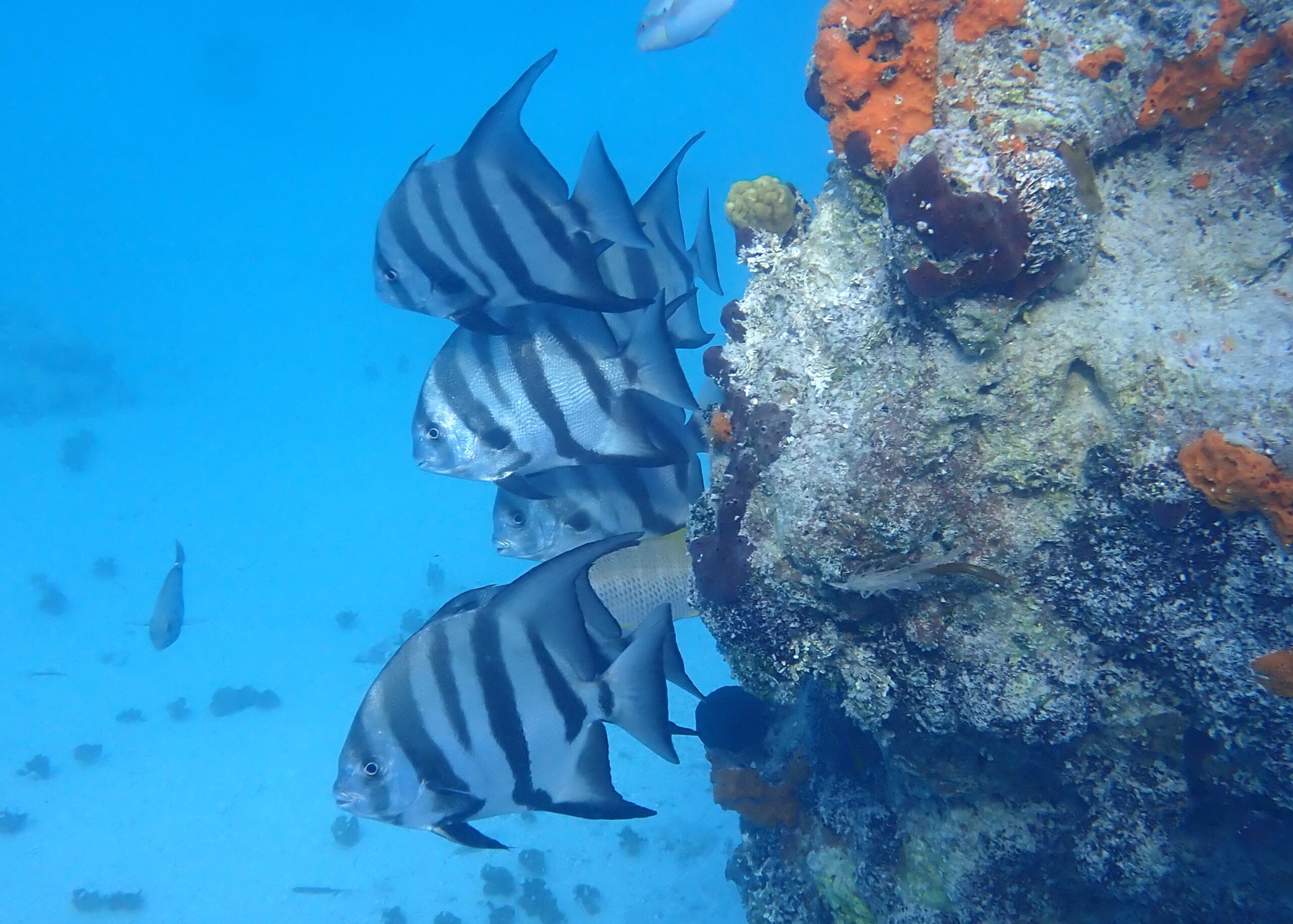
Beautiful examples of the Atlantic Spadefish were noted in this area.
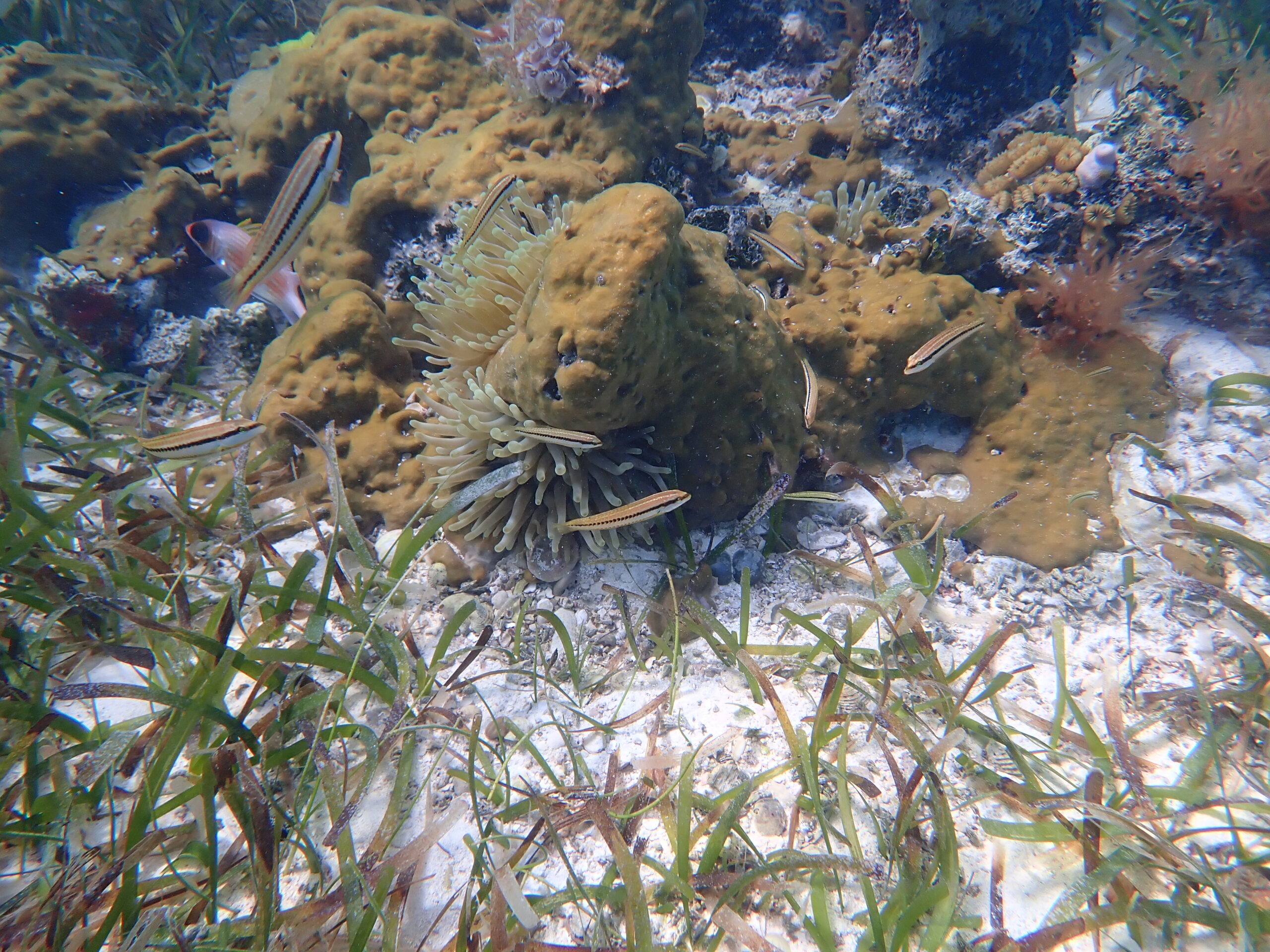
Interesting patches of coral and sponge, with associated species can also be found isolated in the seagrass beds that exist between the two areas of reef.
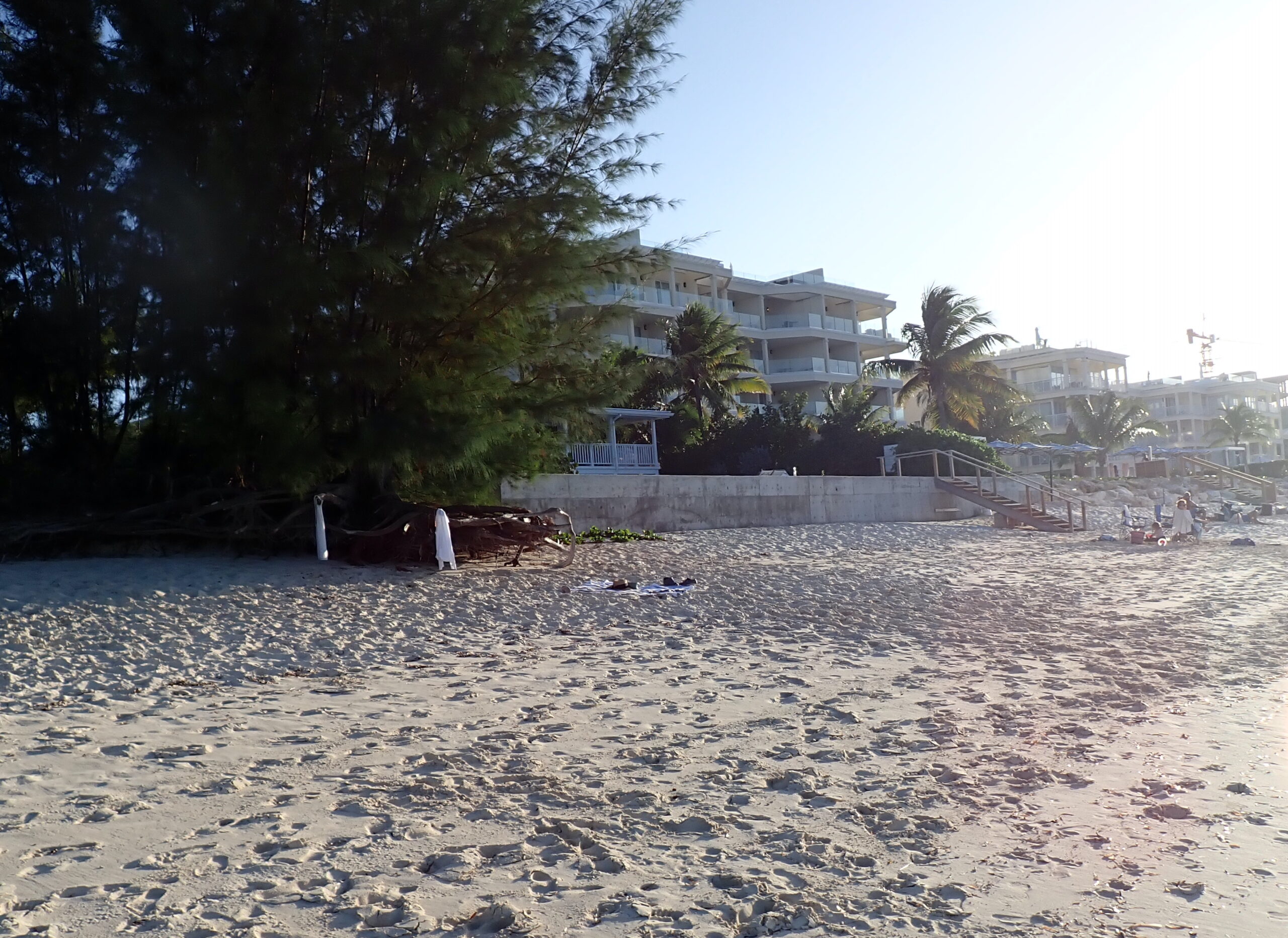
Entry into area 2 is off the beach just past the eastern end of the Windsong complex. It is currently adjacent an undeveloped plot of land, but I doubt this will remain so for long.
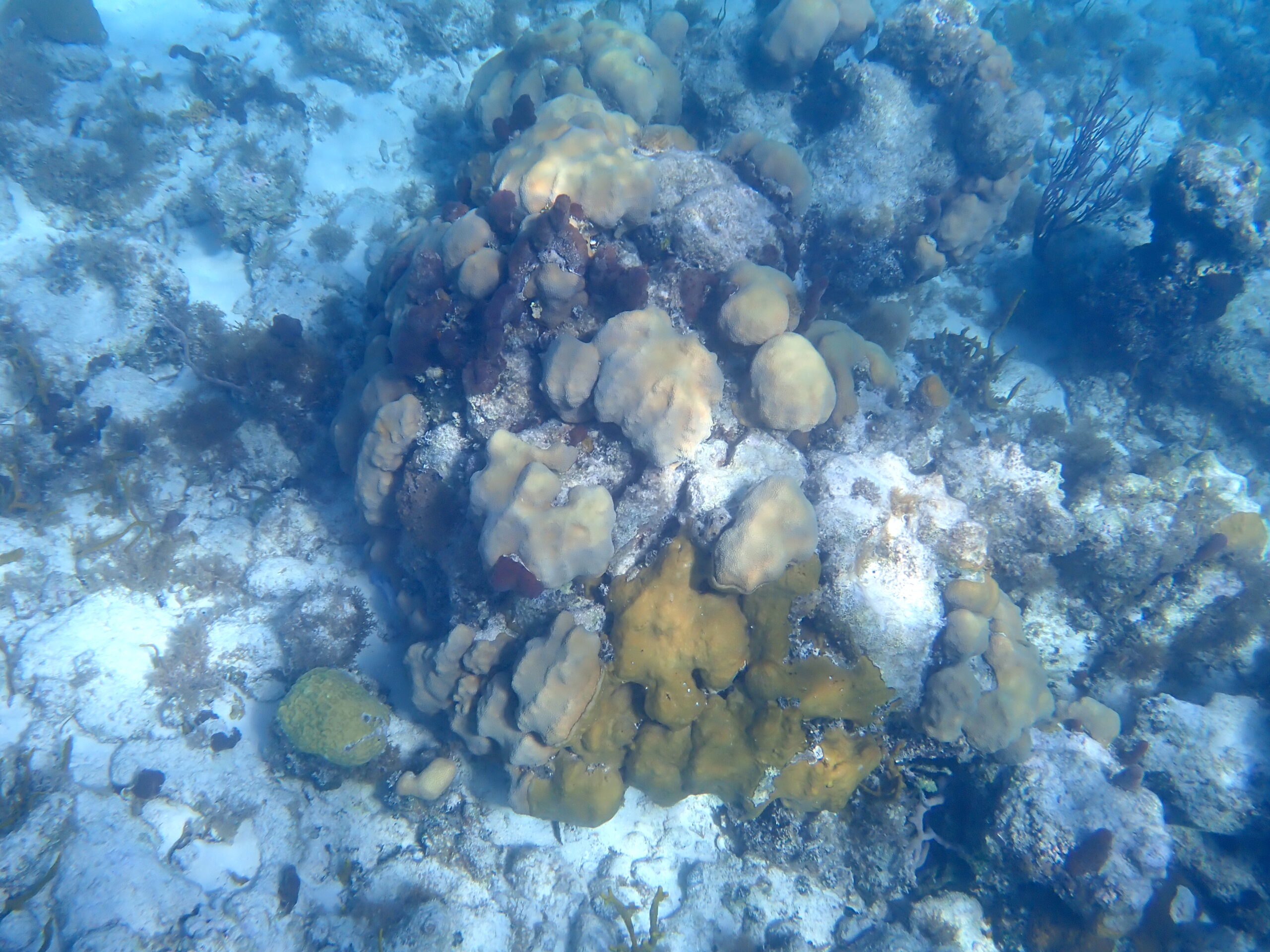
The best areas to visit are slightly offshore where coral and rock outcrops are common, often with healthy growths of hard and soft corals.
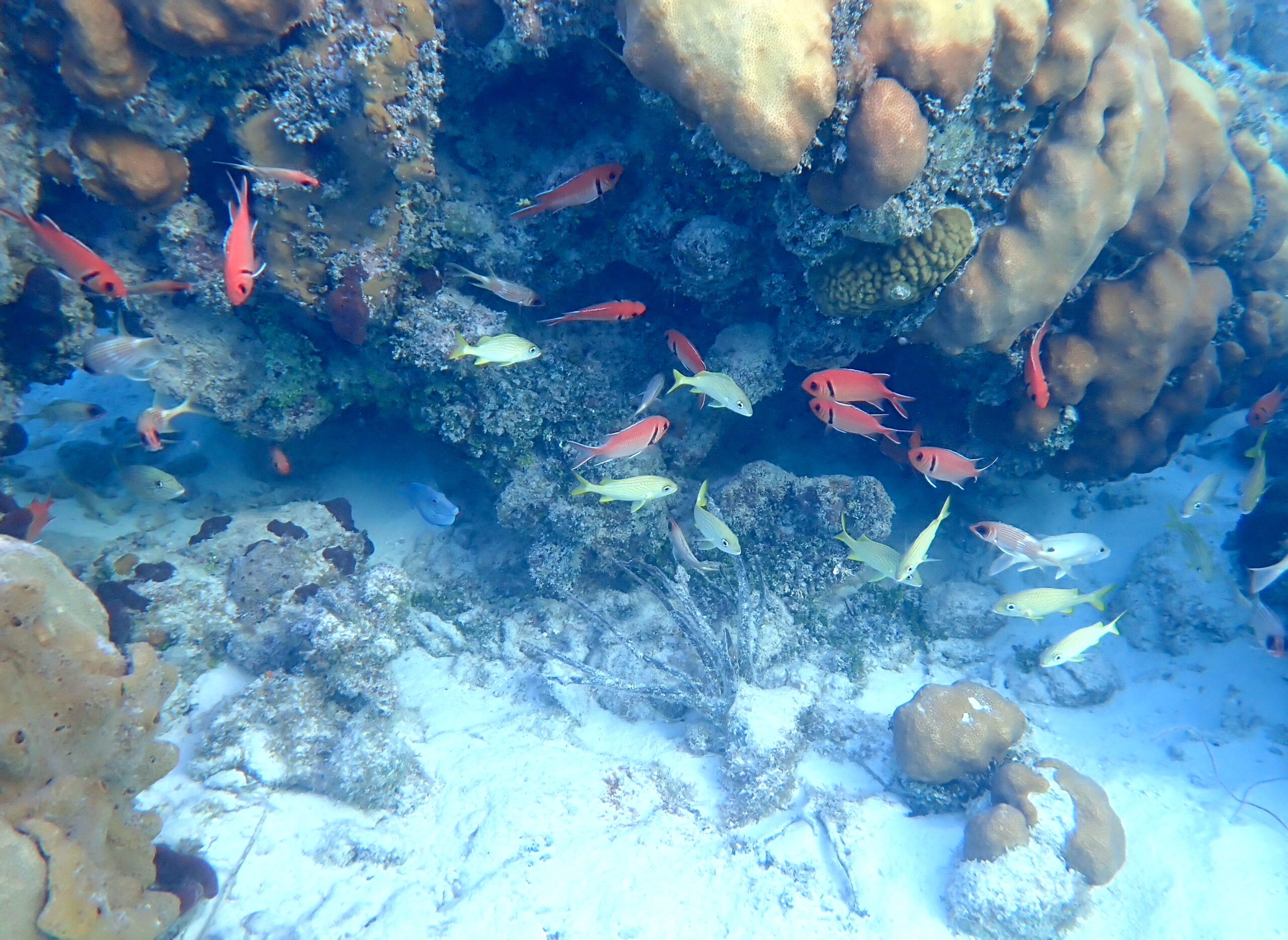
The isolated coral heads in this area are excellent locations to find a wide variety of fish, including Nurse Sharks. Just to reiterate though, vessel activity is poorly controlled in this area and we had several verbal confrontations with vessel moving at unacceptable speeds.

Two areas off the beach can be accessed which have interesting habitats. Area 1 is adjacent the Windsong Resort. This area has a large exclusion zone within it, which is however, seriously distressed due to considerable fine sediment deposition. Area 2 is in much better condition. It is worth noting that both areas, further offshore, present risks to snorkellers due to poorly managed small vessel activity.

Entry into Area 1 can be made either side of the exclusion zone, with the information panels located centrally. Be aware that currents, that run parallel to shore, may drag you onto or away from the exclusion zone. It is the area around the exclusion zone, in particular in the offshore areas, that are of most interest.

Despite the degraded nature of the coral in the reef area, the offshore extents, to the north east, support a diverse mixture of fish species.

Beautiful examples of the Atlantic Spadefish were noted in this area.

Interesting patches of coral and sponge, with associated species can also be found isolated in the seagrass beds that exist between the two areas of reef.

Entry into area 2 is off the beach just past the eastern end of the Windsong complex. It is currently adjacent an undeveloped plot of land, but I doubt this will remain so for long.

The best areas to visit are slightly offshore where coral and rock outcrops are common, often with healthy growths of hard and soft corals.

The isolated coral heads in this area are excellent locations to find a wide variety of fish, including Nurse Sharks. Just to reiterate though, vessel activity is poorly controlled in this area and we had several verbal confrontations with vessel moving at unacceptable speeds.

